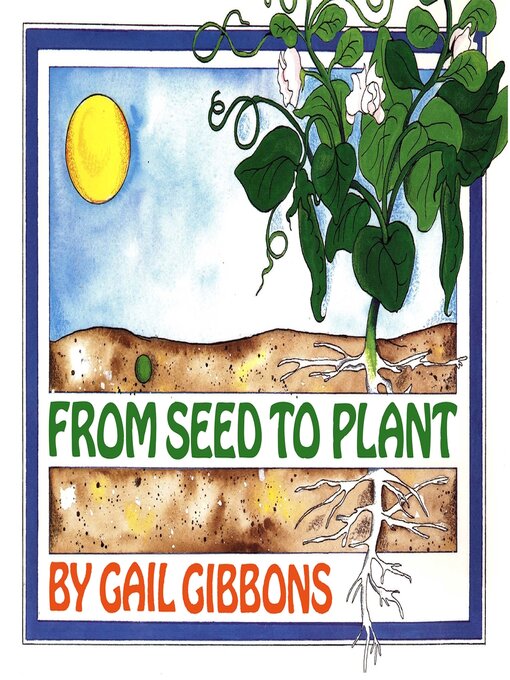Flowers, trees, fruits—plants are all around us, but where do they come from?
With simple language and bright illustrations, non-fiction master Gail Gibbons introduces young readers to the processes of pollination, seed formation, and germination. Important vocabulary is reinforced with accessible explanation and colorful, clear diagrams showing the parts of plants, the wide variety of seeds, and how they grow.
The book includes instructions for a seed-growing project, and a page of interesting facts about plants, seeds, and flowers. A nonfiction classic, and a perfect companion for early science lessons and curious young gardeners.
According to The Washington Post, Gail Gibbons "has taught more preschoolers and early readers about the world than any other children's writer-illustrator." Ms. Gibbons is the author of more than 100 books for young readers, including the bestselling titles From Seed to Plant and Monarch Butterfly. Her many honors include the Washington Post/Childrens Book Guild Nonfiction Award and the NSTA Outstanding Science Trade Book Award.
From Seed to Plant was included in the Common Core State Standards Appendix B.
- Available now: Fiction
- New Fiction for Adults
- BookTok
- General Fiction
- Fantasy
- Poetry
- Historical
- Horror
- Crime & Thrillers
- Romance
- Science Fiction
- See all fiction collections
- Available now: Non-fiction
- New Non-Fiction for Adults
- Biographies
- Cooking & Baking
- Hobby & DIY
- Travel
- Sports & Health
- History
- Society
- Art, Music, Theater
- Science & Technology
- Finance & Economics
- See all non-fiction collections


